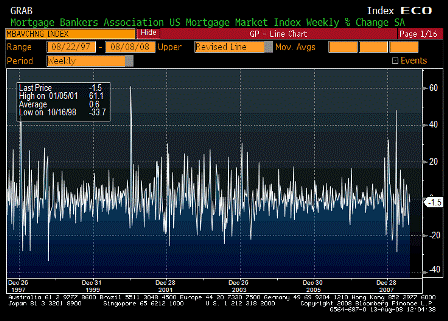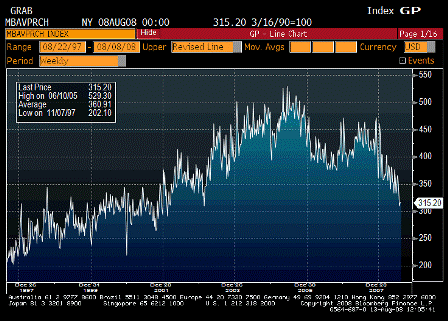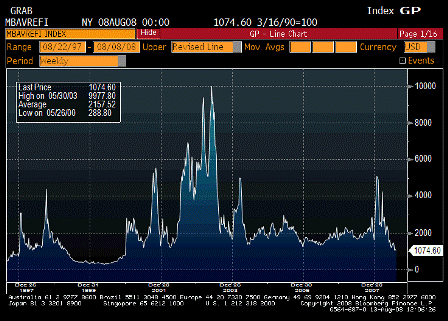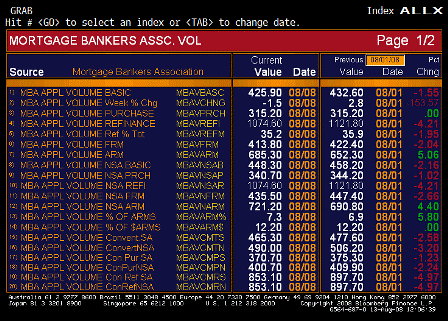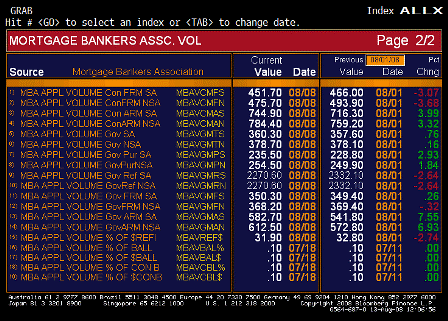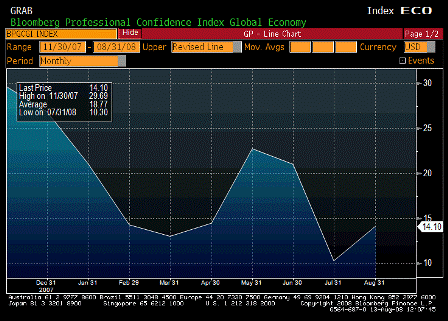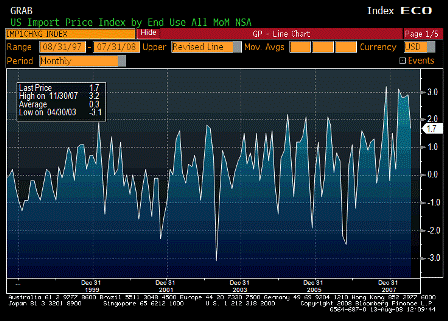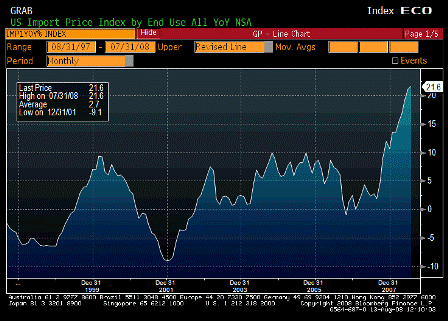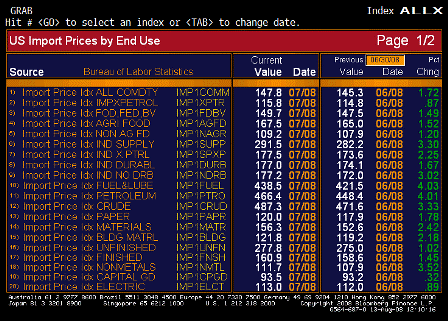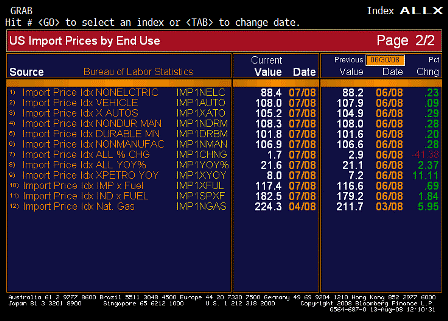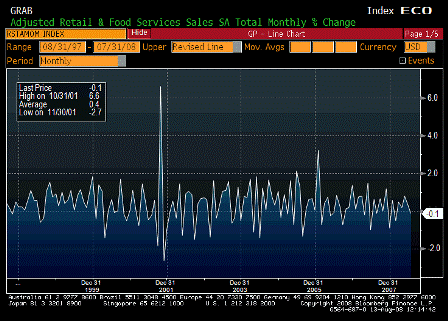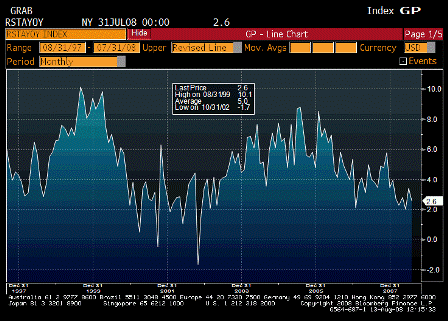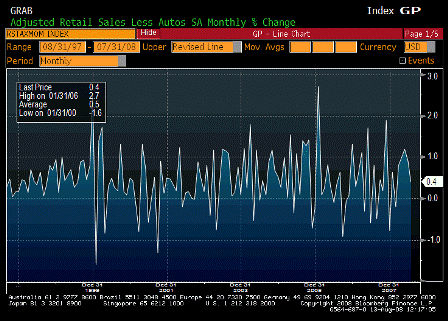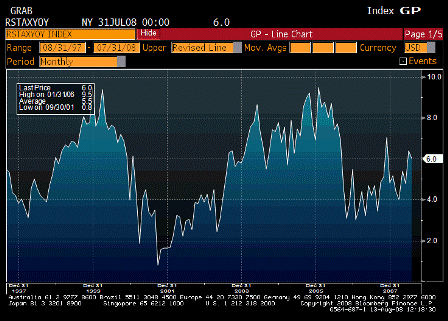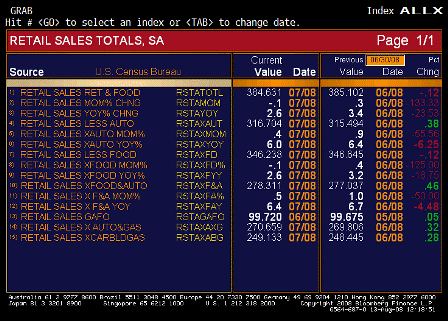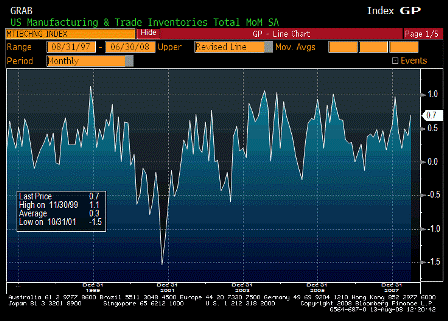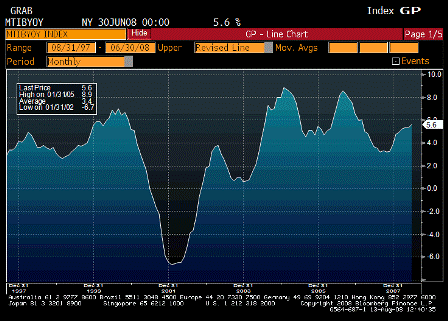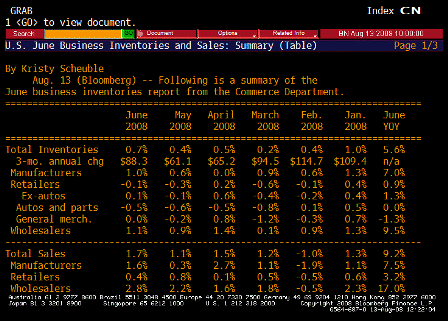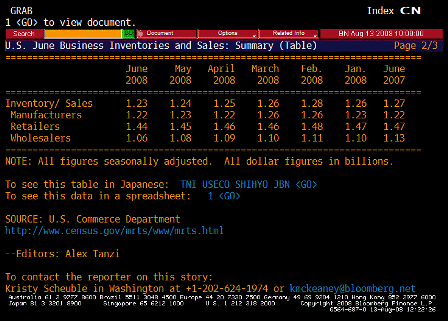France and the eurozone are looking pretty grim.
Exports are weak as demand from the US for imports slows.
Rising prices from energy prices that have driven up ‘inflation’ are in the hands of the Saudis and Russians.
Rising budget deficits are both necessary to sustain growth and threatening national solvency.
The eurozone has used a chronic shortfall of domestic demand to drive exports and sustain growth. When they had their own currencies, they used to buy USD to keep their currencies down and real wages low.
(This culture of exports keeps the standard of living down but it does keep people working.)
With the new single currency, the ECB can’t (ideologically) buy USD to keep their real wages low. So now they are losing their export channel and need to sustain domestic demand to sustain employment. Lower interest rates don’t do that. ECB rate cuts won’t matter.
Just like Fed, rate cuts didn’t sustain US demand, and zero rates didn’t sustain demand in Japan. And fiscal balance in the eurozone is strictly at the national level, where deficits risk solvency. And their banks are at risk of insolvency as well, with deposit insurance also at the national level.
This is true systemic risk. Things can deteriorate very quickly, and the entire payments system shut down, if external demand is too low to sustain growth and employment.
Operationally the ‘solution’ is quite simple; the ECB or the Euro Parliament can write any size check they want (in euros) to support any size fiscal response they want. But legally (and ideologically) this can’t happen without a change in the treaty.
And add to this the fact that the ECB has been increasingly borrowing USD from the Fed to support its banking system that somehow has been caught short USD, probably due to making USD loans that they funded in USD. While this is relatively small (maybe $120 billion), it could snowball, and ultimately, at the macro level, it may wind down with euro agents selling euros to buy and repay the USD and trigger a currency collapse.
Right now it’s all going the wrong way in the eurozone.
| FRENCH ECONOMY SHRANK IN SECOND QUARTER AS ECONOMIC CRISIS |
| SocGen, Barclays Say ECB to Cut Rates to 3.5% |
| German Import Price Inflation Holds at Fastest Pace Since 2000 |
| European Central Banks Offer More Dollars From Fed |
| Consumer Prices Decline in Two German States, Increase in Hesse |
| French Consumer Confidence Rises on Oil Price Decline |
| ECB’s Gonzalez-Paramo Says Markets Still `in Middle’ of Crisis |
| One-Month Euro Borrowing Rate Climbs to 8-Year High, EBF Says |
| Sarkozy Pushes Back Deficit Reduction as Growth Slows |
| French Budget Deficit Wider Than Estimated, Woerth Says |
| Spanish Mortgage Lending Falls 29 Percent, 12th Monthly Decline |
| ECB’s Ordonez Says Spain Wage-Indexation Toxic |
| Euro-Area Economy Is at Standstill, Bank of Italy Index Shows |
| European Government Bonds Rise as U.S. Bank-Rescue Plan Stalls |
Articles
FRENCH ECONOMY SHRANK IN SECOND QUARTER AS ECONOMIC CRISIS
(dpa) – The French economy contracted by 0.3 per cent in the second quarter of the year, the first quarter of negative GDP growth since 2002, the government’s statistical office INSEE announced on Friday.
The announcement could be the first of a series of bad news for France’s economy. French radio reported Friday that the unemployment figures to be made public on Monday will be the worst in 10 years, with up to 40,000 adults added to the jobless rolls in August.
On Thursday, in a speech on the current economic crisis, French President Nicolas Sarkozy said that the turmoil in the American finance sector would affect French economic growth, joblessness and purchasing power.
He also suggested that the country could be heading for a recession, which is defined as two consecutive quarters of negative economic growth.
According to INSEE, the economic contraction in the second quarter was due in part to the second consecutive decline in household spending and a 1.7 per cent fall in exports. dpa sm sc
SocGen, Barclays Say ECB to Cut Rates to 3.5%
(Bloomberg) The European Central Bank will cut its benchmark interest rate to 3.5 percent next year as the financial market crisis deepens the economic slowdown and slows inflation, economists at Societe Generale SA and Barclay’s Capital said, revising earlier calls.
“A deeper corporate sector correction is now under way in Europe that will only be exacerbated by the financial turmoil,”
James Nixon, an economist at Societe Generale in London wrote in a note to clients. “Weaker growth and falling inflation will now finally open the door to a series of gradual interest-rate cuts.”
Business confidence in the euro area’s three largest economies fell this month more than economists forecast as financial turmoil in the U.S. imperiled growth around the world.
The ECB has so far said slowing growth isn’t enough to overcome concern that the fastest inflation in 16 years will become entrenched through a wage-price spiral.
Nixon forecasts three quarter-percent cuts in March, June and September, bringing the ECB key rate to 3.5 percent from 4.25 percent. He previously predicted rates would remain unchanged throughout 2009.
Barclays Capital’s chief European economist, Julian Callow, expects the bank to start cutting rates in December and then lower borrowing costs again in March and June.
Callow conceded that the first cut may be delayed as ECB policy makers await the outcome of Germany’s IG Metall wage round, raising the “risk of a 50 basis-points cut in March.”
German Import Price Inflation Holds at Fastest Pace Since 2000
(Bloomberg) Import-price inflation in Germany, Europe’s largest economy, held at the fastest pace in almost eight years in August led by higher energy costs.
Prices rose 9.3 percent from a year earlier, the Federal Statistics Office in Wiesbaden said today, unchanged from July and the highest level since November 2000. Economists expected an increase of 9.1 percent, the median of 21 forecasts in a Bloomberg News survey showed. In the month, prices fell 0.8 percent, less than economists expected.
While the price of oil has retreated about a third from its July record, easing pressure on consumer and company purses, a barrel of crude is still over 30 percent more expensive than a year ago. The European Central Bank expects past oil price gains to result in pipeline pressures that could unleash an inflationary wage-price spiral. Policy makers say preventing these so-called second round-effects overrides any anxiety over faltering economic growth and the financial market crisis.
“While the price of oil may have dropped significantly from July, it’s still high and other commodities are slower to follow,” said Alexander Koch, an economist at UniCredit Markets and Investment in Munich. “There are still pipeline pressures that will keep the ECB on inflation alert until the end of the year.”
ECB Vice President Lucas Papademos said in an interview with Italy’s Il Sole 24 Ore published today that there are “clear indications” of faster wage increases and that the bank “cannot exclude renewed increases in oil and commodity prices.”
Rising Prices
German inflation probably slowed to 2.9 percent in August from 3.3 percent in the previous month, when measured using a harmonized European Union method, a Bloomberg survey shows. That’s still well above the ECB’s 2 percent limit. The Federal Statistics Office in Wiesbaden may publish September inflation data today.
Prices for gas rose 55.4 percent in the year and oil was 50.3 percent more expensive, today’s report showed. The cost of coal increased 84.3 percent from August 2007. Excluding energy, import prices rose 4.1 percent in the year.
Business confidence in the euro area’s three largest economies fell more this month than economists forecast as financial turmoil in the U.S. imperiled growth around the world, industry surveys showed yesterday. The economy of the 15 nations sharing the euro is already struggling to recover from a second- quarter contraction.
In the past two weeks, Lehman Brothers Holdings Inc. collapsed and the U.S. government took over American International Group Inc. The world’s biggest financial companies have posted more than $520 billion in writedowns and credit losses since the start of last year after record defaults on housing loans to consumers with poor credit histories, pushing up borrowing costs as banks became reluctant to lend to each other.
The ECB raised its key rate to a seven year-high of 4.25 percent in July after record oil prices pushed the inflation rate to the highest in 16 years. Annual price gains have decelerated, even if, at 3.8 percent, they are still almost twice the ECB’s 2 percent limit.
European Central Banks Offer More Dollars From Fed
(Bloomberg) European central banks will for the first time let banks borrow dollars from them for a week in an effort to ease drum-tight money markets at the end of the quarter.
With the cost of borrowing dollars over three months yesterday jumping by the most since 1999, the European Central Bank, Bank of England and Swiss National Bank said today they will auction a total of $74 billion in one-week funding. The Federal Reserve assisted by providing the ECB and SNB with access to $13 billion more of its currency, boosting the amount of dollars it makes available to counterparts to $290 billion.
“These operations are designed to address funding pressures over quarter end,” the central banks said in statements.
“Central banks continue to work together closely and are prepared to take further steps as needed to address the ongoing pressure in funding markets.”
The central banks are tweaking the timeframes over which they auction dollars as banks remain reluctant to lend to each other even after the Fed more than quadrupled the amount of dollars that can be sold around the world. Concern a U.S. rescue plan to ease the worsening financial crisis won’t be implemented fast enough may strain markets again today.
“The money markets will remain tense until the U.S. package is agreed and starts to be implemented,” said Holger Schmieding, chief European economist at Bank of America Corp. in London.
Switch to Weekly
Having sold dollars for a day for the first time last week, the ECB will today offer $35 billion in funds for a week. It will reduce its sale of overnight dollars by $10 billion to $30 billion. The Swiss National Bank will auction $9 billion over seven days, while paring the amount it offers overnight to $7 billion from $10 billion.
The Bank of England, which has held six overnight dollar auctions for $40 billion, will now sell $30 billion for a week and $10 billion in overnight auctions. The U.K. bank will also hold weekly auctions for pounds against extended collateral including mortgage securities.
Central bankers are stepping in as a source of dollars as $522 billion in writedowns and losses tied to the U.S. mortgage market and questions about the credit-worth of counterparties prompt bankers to hoard cash to meet their own funding needs.
Banks in the euro region deposited more than 1 billion euros with the ECB for a sixth day running yesterday, the longest such stretch since the introduction of the euro in 1999.
Swap Lines
The Fed is providing counterparts with dollars through so- called swap lines, enabling them to auction the U.S. currency in their own markets in return for collateral. It last week extended links established in December with the ECB and Swiss National Bank by $70 billion, and created $110 billion in new facilities with central banks in Japan, the U.K. and Canada. Yesterday, it agreed to channel $30 billion to Norway, Sweden, Denmark and Australia.
The financial crisis, which deepened this month after Lehman Brothers Holdings Inc. filed for bankruptcy and the U.S. government took over American International Group Inc., is entering a new stage as lawmakers squabble over a $700 billion rescue of the U.S. banking system. Negotiations stalled yesterday after Republicans in the U.S. House of Representatives undercut the Bush administration and left it to congressional leaders to hammer out a compromise.
Concern the plan may be diluted yesterday spurred money- market rates around the world. The three-month London interbank offered rate, or Libor, that most banks charge each other for dollar loans rose 29 basis points to 3.77 percent.
Consumer Prices Decline in Two German States, Increase in Hesse
(Bloomberg) Consumer prices in two German states eased in September as the cost of food and package vacations declined. Prices rose in the state of Hesse.
Prices in Brandenburg and Saxony fell 0.1 percent from August, the state statistics offices in Kamenz and Potsdam said today. In the year, prices gained 2.8 percent in Brandenburg and 3 percent in Saxony. In Hesse, consumer prices rose 0.1 percent from August and 3.3 percent in the year.
While the cost of oil has fallen from a July record it’s still 30 percent higher than a year ago. The European Central Bank expects past gains in food and commodity prices could still unleash an inflationary wage-price spiral. ECB President Jean- Claude Trichet said on Sept. 11 that inflation is the main worry of European citizens.
“Energy prices still drive inflation in Germany,” said Matthias Rubisch, an economist at Commerzbank AG in Frankfurt.
“The ECB will remain concerned as inflation will recede only slightly in the coming months.”
Economists expect German inflation to slow to 2.9 percent in September from 3.3 percent using a harmonized European Union method, the median of 15 forecasts in a Bloomberg News survey shows. The Federal Statistics Office in Wiesbaden is scheduled to report pan-German inflation figures later today.
Energy prices in Brandenburg rose 0.6 percent from the previous month while prices for package vacations fell 7 percent and costs for holiday accommodation decreased 27.4 percent.
Seasonal food prices dropped 2.5 percent. In Hesse, food prices fell 0.3 percent from August while household energy costs rose 1.4 percent in the month and 13.3 percent in the year.
Import Price Pressure
Import-price inflation in Germany, Europe’s largest economy, held at the fastest pace in almost eight years in August led by higher energy costs, the Federal Statistics Office in Wiesbaden said today. Excluding energy, import prices rose 4.1 percent in the year.
ECB Vice President Lucas Papademos said in an interview with Italy’s Il Sole 24 Ore published today that there are “clear indications” of faster wage increases and that the bank “cannot exclude renewed increases” in oil and commodity prices. “The outlook for inflation over the medium term will fundamentally depend on future unit labor cost growth.”
Germany’s IG Metall labor union, representing 3.2 million workers, is seeking the biggest pay increase in 16 years for staff at companies such as ThyssenKrupp AG and Siemens AG. The union, Germany’s biggest, wants wages to rise 8 percent next year, Chairman Berthold Huber said this week.
French Consumer Confidence Rises on Oil Price Decline
(Bloomberg) French consumer confidence unexpectedly rose for the first time in more than a year in September after falling fuel prices left people with more to spend on food and clothing.
A gauge of consumer sentiment rose to minus 44 from a revised record-low minus 47 in July, the last month reported, the Paris- based national statistics office, Insee, said in a statement today. Economists expected a reading of minus 47, according to the median of 20 forecasts in a Bloomberg News survey.
The price of oil has fallen by almost a third from its record in July. Still, crude remains at more than $100 a barrel and is 33 percent higher than a year ago. At the same time, a deepening crisis in global financial markets may dim consumers’ willingness to spend in coming months.
“Whether it’s consumption, investment or exports, all the engines of French growth are stopped, or even in reverse,” said Marc Touati, chief economist at Global Equities in Paris, before the report.
Earlier this month, Finance Minister Christine Lagarde pared her prediction for 2008 economic growth to around 1 percent from a previous forecast of at least 1.7 percent. Those forecasts may prove optimistic as the worst U.S. housing slump since the Great Depression has pushed up the cost of credit globally and roiled financial markets, threatening to further pare global growth.
Growth Declines
The French economy shrank 0.3 percent in the second quarter, the first contractions in more than five years, a separate report confirmed today. Household spending fell 0.1 percent, while exports declined 1.7 percent, from an increase of 2.6 percent in the first three months. The European Commission predicted Sept. 10 that the economy will stall in the third quarter, barely skirting a recession.
“It’s possible France’s GDP will shrink in the third quarter; even zero growth would be good,” Frederik Ducrozet, an economist at Credit Agricole SA in Paris, said on Bloomberg Television.
The gain in French confidence mirrored advances in Germany and Italy as the lower oil prices fueled optimism that record inflation rates would ease. Confidence among consumers in Germany, Europe’s biggest economy, unexpectedly rose for the first time in five months, a report showed yesterday. Italian confidence advanced from a 15-year low in August.
Manufacturers were less optimistic. Confidence among French producers dropped to a five-year low in September, Insee said on Sept. 24, suggesting that the turmoil in markets fueled by the collapse of Lehman Brothers Holdings Inc. has overshadowed declines in oil and the dollar. Crude has fallen 27 percent decline since a July 11 record of $147.27 and the euro also declined from a peak against the dollar the same month.
French President Nicolas Sarkozy said in a speech on the economy yesterday that the turmoil in financial markets will be lasting and the fallout will hurt growth, employment and spending.
ECB’s Gonzalez-Paramo Says Markets Still `in Middle’ of Crisis
(Bloomberg) European Central Bank Executive Board member Jose Manuel Gonzalez-Paramo comments on the global financial market turmoil. He spoke today at a conference in Chicago.
“I would have much preferred to be here under somewhat different circumstances. The international financial system has reached a crossroad. Large financial institutions have failed or have to be taken over by others. Major bank models have been put into question. Important markets exhibit high volatility and low liquidity. Together with other economic developments, the financial turmoil has significantly increased the uncertainty surrounding the outlook for growth and inflation in the short- and medium-term both in the euro area and in the U.S.”
“We still seem to be in the middle of” the financial turmoil.
One-Month Euro Borrowing Rate Climbs to 8-Year High, EBF Says
(Bloomberg) The cost of borrowing in euros for one month rose to the highest level since December 2000, according to the European Banking Federation.
The euro interbank offered rate, or Euribor, climbed 3 basis points to 5.01 percent, EBF figures show today. It was at 4.63 percent a week ago. The three-month rate increased 2 basis points to 5.14 percent, the highest level since the introduction of the euro in 1999.
Sarkozy Pushes Back Deficit Reduction as Growth Slows
(Bloomberg) French President Nicolas Sarkozy, facing the slowest economic expansion in at least five years, shelved deficit-reduction plans in his second budget released today.
The budget is based on a growth forecast for this year and next of 1 percent, less than half the 2007 pace, which will leave the government with less revenue and higher welfare costs. To keep the shortfall under the European Union limit, France may cap spending, not replace half of retiring civil servants, and raise taxes to fund incentives for the unemployed to return to work.
“It’s easy to explain: tax receipts are shrinking,” Budget Minister Eric Woerth said today on RTL radio. “Less growth means less fiscal revenue.” He cited the higher cost of debt and high inflation as other factors pushing up the deficit.
Sarkozy’s 8 billion euros ($11.7 billion) of tax cuts this year were not enough to buoy growth as surging commodities prices fanned inflation and global demand cooled amid a year-long credit crisis. The euro region’s second-largest economy contracted and shed jobs in the second quarter, sending consumer confidence to a record low and curbing spending.
Deficit Widening
The new budget plan forecasts the deficit will hold at last year’s level of 2.7 percent of gross domestic product this year and next, remaining below the EU threshold of 3 percent. The government initially planned to narrow the shortfall to 2.5 percent this year and 2 percent next year.
“If there’s one European country in a problematic situation regarding the 3 percent, it’s France,” said Natacha Valla, an economist at Goldman Sachs Group Inc. in Paris.
The higher deficit and slower growth will force an increase in borrowing. The government plans to sell $135 billion euros of bonds and notes next year, up from $116.5 billion euros worth this year. Total debt will rise to 66 percent of GDP from 65.3 percent this year.
The budget plan is based on the assumption that the cost of oil will average $100 a barrel in 2009 and the euro will be worth on average $1.45. Crude oil reached a peak of $147.27 in July and the euro hit a record $1.6038 in the same month.
Sarkozy, who’s been in office since May 2007, has faced growing popular discontent as gasoline and food prices rose.
Sixty-two percent of those surveyed by BVA polling company this month found his economic policy “bad” or “very bad.”
Public Support
“The reason why Sarkozy was elected president is that he’d promised to deliver on economic and social issues at a time of pessimism,” said Gael Sliman, deputy director at BVA. Now “the bad economic news condemn him to be unpopular during all the difficult period of 2008 and part of 2009.”
Sarkozy yesterday said he wouldn’t impose austerity policies as the turmoil in financial markets hurts economic growth, job creation and household purchasing power.
“If activity were to strongly and lastingly recede, I wouldn’t hesitate to take necessary steps to underpin it,” the French president said in a speech in Toulon, France. “Telling the truth to the French is saying that the crisis isn’t over, its consequences will be lasting.”
Sarkozy’s political opposition, said he was using the world economic crisis to divert attention from his policy failures.
`Using’ the Crisis
“The president is using the crisis as an excuse to justify the acceleration of an austerity policy towards the middle class” and the least well off, Michel Sapin a former Socialist Finance Minister, said in a statement.
The government has little leeway to act, especially with France holding the rotating EU presidency. Two weeks ago, Finance Minister Christine Lagarde and her European counterparts pledged to pursue financial discipline. European Central Bank President Jean-Claude Trichet called for them to deliver on their promise.
Woerth said today that government has reined in spending.
“It’s going to be a status-quo budget,” said Laurence Boone, an economist at Barclays Capital in Paris. “They have no room for maneuver if they want to stay within the EU limits” of a deficit of less than 3 percent of gross domestic product.
The tax cuts announced by Sarkozy last year, including a mortgage-interest deduction, the elimination of most inheritance levies and a wealth-tax rebate for people investing in small companies will extend into next year. They also include the elimination of most taxes on overtime hours, which may not be as effective because of the slowdown, Barclays’ Boone said.
Legislative Victories
Sarkozy won a string of legislative victories before the summer recess. Lawmakers in recent past months passed measures proposed by the government to boost retail competition, toughen jobseekers’ benefit rules and increase work hours.
“Structural reforms have been launched,” Goldman’s Valla said. “What the economy needs are very precise and fast spending measures, but France doesn’t have the means to do it.”
The president has promised to eliminate a tax on companies’ sales. At the same time, he is planning new levies on private health and retirement insurers and on corporate profits distributed to employees as part of a plan to erase the health- care system deficit by 2011.
He also said last month he will impose a new capital-gains tax to fund incentives for the unemployed to go back to work, a measure backed by 65 percent of French people, the BVA poll showed.
According to Medef, France’s biggest business lobby, overall levies on companies are going to rise “slightly” in 2008 and “strongly” next year.
French Budget Deficit Wider Than Estimated, Woerth Says
(Bloomberg) France’s budget gap this year will be wider than estimated, Budget Minister Eric Woerth said, adding that he sees the deficit in 2009 at 2.7 percent of gross domestic product.
Woerth said the deficit will rise to about 49 billion euros ($72 billion) this year, up from a 41.4 billion-euro initial forecast. He said 2009’s deficit will widen to 52 billion euros.“It’s easy to explain,” he said. “Tax receipts are shrinking. Less growth means less fiscal revenue.”
He cited the higher cost of debt and rising inflation among other reasons for the widening French deficit.
Woerth said France will not drop the government goal of balancing its budget in 2012.
“It is not out of reach,” he said.
Spanish Mortgage Lending Falls 29 Percent, 12th Monthly Decline
(Bloomberg) Mortgage lending in Spain fell for the 12th month in July as the collapse of a decade-long housing boom pushed the Spanish economy toward recession.
Mortgage lending, in terms of the amount of money disbursed, fell 29 percent from a year earlier, and the number of mortgages issued for homes declined 29 percent, the Madrid-based National Statistics Institute said in an e-mailed statement today. In June mortgage lending fell 37 percent from a year earlier.
The housing boom helped Spain grow faster than the euro- region for more than a decade. The global credit crunch has increased borrowing costs and contributed to pushing construction and real estate companies into bankruptcy, and Spain is now expected to follow Ireland into a recession, according to the European Commission.
Housing transactions fell 26 percent from a year earlier, the institute said.
ECB’s Ordonez Says Spain Wage-Indexation Toxic
(Bloomberg) European Central Bank Governing Council member Miguel Angel Fernandez Ordonez comments on Spanish wage-indexation and the ECB’s inflation-fighting policy. He spoke in Seville, Spain, today.
On Spanish wage-indexation:
“Clauses linking pay settlements to inflation in collective- bargaining agreements are especially toxic when inflation has increased due to external shocks.
“It’s not surprising that the unemployment rate has increased in the past year.
“It’s much more important than in the past to activate all mechanisms that can allow agents to limit cost increases and improve productivity gains.
“Until now, employment has been the main variable that adjusts at times of crisis.
“Unemployment has seen an intense increase.
“The most important thing is not to give in to the temptation of adopting policies that try to avoid the adjustment.”
“The damage of unemployment is much worse” than a salary decline.
On Spanish inflation:
“Inflation will probably be much closer to the euro-region average in 2009 and 2010.”
On the ECB’s inflation-fighting credentials:
“It’s essential that the European Central Bank is fully focused on the objective it been set to maintain inflation at a very moderate pace and in this respect I think the ECB is fully fulfilling its mission.
“There is full confidence that the ECB will return inflation to its objective, and that is helping to mitigate somewhat the current uncertainties regarding the financial system, economic growth and other variables.”
On money-market interest rates:
“It’s difficult to predict if this tightening will keep increasing, though clearly interest rates in money markets, the fundamental reference for Spanish mortgages, already include a substantial risk premium over the ECB’s official interest rates.”
On the global economy:
“Unlike a few months ago, no one is defending the possibility of decoupling now.”
The effects of the crisis “have touched everyone.”
On U.S. rescue plan:
“We should be grateful that with the money of U.S. taxpayers they improve the international financial situation.”
On how the European banking sector compares to U.S.:
“So far, the situation in the European banking system isn’t the same, except one country outside the euro region that is facing considerable problems.”
On Spanish real estate:
“We have a problem in real estate, but it is far from what is being seen in the U.S.”
“U.S. subprime has 16 percent default rates. We haven’t seen that in the worst moments of crisis.”
On Spanish banks:
“If construction is going to be reduced then the Spanish financial system has to adjust to the new situation.”
“What they have in front of them is a complicated task.”
Euro-Area Economy Is at Standstill, Bank of Italy Index Shows
(Bloomberg) The European economy has stalled, an index co-produced by the Bank of Italy showed.
The EuroCoin index measuring economic expansion fell this month to a record low of 0.04 from 0.17 in August, the London- based Center for Economic Policy Research said in a report today.
“The most recent figure was negatively affected by the sharp fall of firms’ confidence and the recent financial markets retreat,” the report said.
The economy of the 15 nations that share the euro contracted in the second quarter for the first time since the single currency was introduced in 1999.
European Government Bonds Rise as U.S. Bank-Rescue Plan Stalls
(Bloomberg) European government bonds rose, with yields on two-year notes headed for the biggest weekly decline in eight months, as investors sought the safest assets after negotiations on a U.S. financial-rescue plan stalled.
Investors piled into short-dated debt as lawmakers in the U.S. prepared to meet for a second day after talks yesterday ended without an agreement. A group of House Republicans led by Eric Cantor of Virginia said they wouldn’t back a plan based on the approach outlined by Treasury Secretary Henry Paulson and supported by President George W. Bush and Democratic leaders.
Washington Mutual Inc. was taken over by JPMorgan Chase & Co., in the biggest U.S. bank failure in history.
“The market is reminded once again that this is not a simple piece of legislation,” Luca Jellinek, a London-based strategist at Royal Bank of Scotland Group Plc, wrote in a note today. “The news is uniformly friendly” to the bond market.
The yield on the two-year note dropped 9 basis points to 3.75 percent as of 10:25 a.m. in London. The 4 percent note due September 2010 rose 0.17, or 1.7 euros per 1,000-euro ($1,458) face amount, to 100.46. Were the note to close at that level, it would be the biggest weekly decline in the yield since the five days ended Feb. 8.
The yield on the 10-year German bund, the euro region’s benchmark government-debt security, fell 3 basis points to 4.20 percent. Yields move inversely to bond prices.
The gains pushed the difference in yield, or spread, between two- and 10-year notes to the widest in five months as investors raised bets the financial crisis in the U.S. will crimp economic growth in Europe.
Outperform Treasuries
European bonds have outperformed U.S. Treasuries this quarter as the bailout plan fuelled speculation that it will add to the U.S. government’s fiscal burden. Bonds in the euro region handed investors a 2.97 percent return since the end of June, compared with 1.91 percent from their U.S. counterparts, according to Merrill Lynch & Co.’s EMU Direct and Treasury Master indexes.
Demand for government bonds was also boosted as stocks declined and the cost of protecting European corporate bonds from default rose. The Dow Jones Stoxx 600 Index fell 1.3 percent. Contracts on the Markit iTraxx Crossover Index of 50 companies with mostly high-risk, high-yield credit ratings increased 15 basis points to 590, according to JPMorgan Chase & Co., indicating a deterioration in the perception of credit quality.
The European Central Bank, Swiss National Bank and Bank of England said today they will auction a combined $74 billion in one-week funding to counter the seizure in money markets. The Federal Reserve assisted by providing the ECB and SNB with access to $13 billion more of its currency, boosting the amount of dollars it makes available to counterparts to $290 billion.
Money-market interest rates around the world soared yesterday on concern that Paulson’s plan will be diluted as it makes its way through Congress, causing banks to hoard cash. The three-month London interbank offered rate, or Libor, that banks charge each other for dollar loans jumped by the most since 1999 and the euro rate rose to the highest level since November 2000.
[top]

